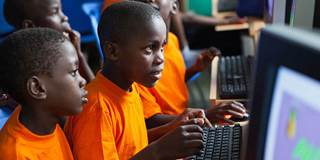
Education and the Invisible Child
Today, 900 million of the world’s 1.4 billion children reach adulthood un- or under-educated, which means that they lack the skills they will need to succeed in a quickly changing global labor market. By short-changing the world’s children, we are squandering the most valuable untapped resource we have.
LONDON – In his 1952 novel, Invisible Man, the late Ralph Ellison famously portrayed American blacks as silent, long-suffering, and entirely unnoticed by the majority white population. In 2016, there is a new – and global – invisible class: the 260 million boys and girls who are currently denied access to basic education.